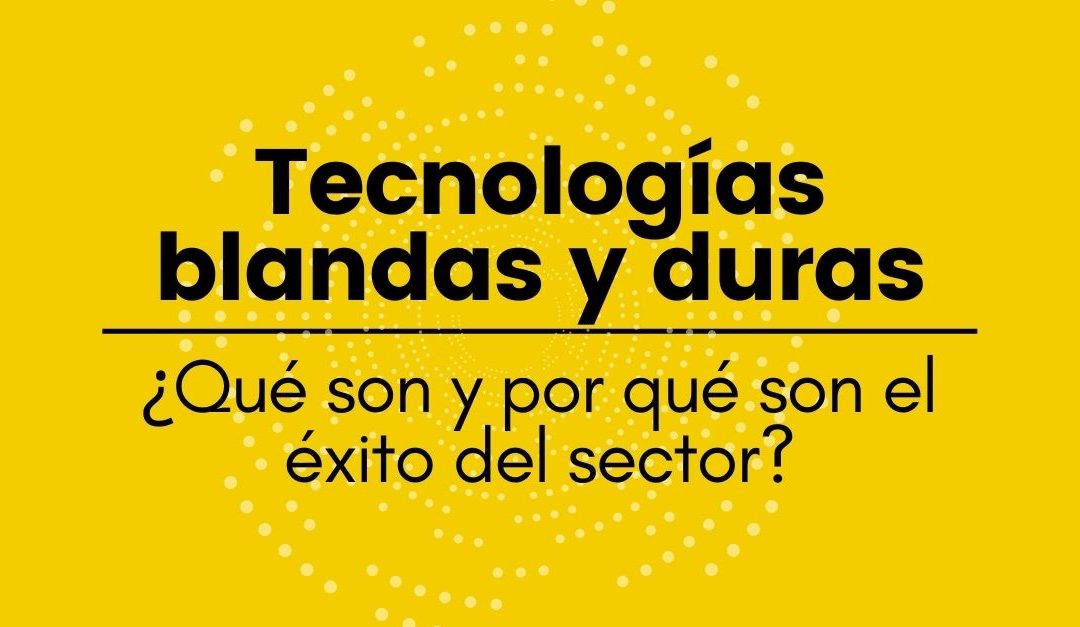The logistics sector's investment in IT is growing steadily, but what real impact is it having on operations? What is the potential of soft technologies? And hard technologies?
The pandemic and subsequent supply chain disruptions have been identified as the greatest threats of the last two years. The uncertainty generated by this situation has led to the reformulation of strategies that, in most cases, have found the same ally: technology.
In fact, according to the latest figures, 9 out of 10 executives consider that ICTs are key to ensuring the progress of the supply chain.
However, coming from an unprecedented year for supply chain and logistics technology investments - $33.6 billion in 2021 alone - experts are speaking out: slow down and analyze.
Automation and digitization are unstoppable, even more so in this sector, but it is necessary to reflect on the suitability of each tool and, above all, its purpose. Is a soft technology better? A hard one? Why should they be implemented in all operations?
Laying the groundwork: hard and soft technology
Technologies can be classified as either soft or hard, although most are usually in the range between these two extremes. However, knowing the difference between the two helps to choose the optimal tool to tackle the task with the best investment-return ratio.
Soft technology, by definition, is considered non-tangible technology, that is, it is not perceived visually and tactically. It results from the application of procedures, standards and everything that man can implement, with his knowledge, in order to seek the optimization of processes.
Hard technology, on the other hand, is that which offers work tools through equipment, devices and machinery that seek to reduce difficulties and complicated processes. In other words, they automate, mechanize and better manage operations that usually consume more time and money.
What are the uses of hard technologies?
Hard technologies are present in the daily lives of millions of people. Generally speaking, they speed up human life, simplifying many activities - cars, computers, even coffee machines.
Its development is closely linked to soft technology, as it draws from it the procedures to be used to meet the needs.
In a practical sense, hard technologies provide us with the necessary tools to carry out a given task, regardless of its complexity.
What about soft technologies?
Soft technology directly involves human knowledge and creativity. It is based on the "know-how" principle, where training and knowledge are applied to face processes.
This optimizes the operations of any organization, especially the administrative and commercial parts. This not only builds internal processes, but also addresses the social relationships within the organizations.
In this sense, the use of soft technologies ranges from the development of business strategies to the creation of software that enables the implementation of hard technologies.
What is the most suitable technology for logistics?
As a result of the situations experienced in recent months, many of the decision-makers in the supply chain and logistics have chosen to invest in technology as a way to respond to disruptions that threaten their business.
However, the figures show an undeniable reality that answers the question posed above. While 59% of companies have focused their economic efforts on technological investments in hard technology, 53% have focused on administrative applications such as ERP, CRM, WMS and TMS solutions.
In this way, soft and hard technologies feed each other, forming a perfect binomial capable of solving problems in more controllable environments, such as the warehousesand in environments that are more sensitive to external factors, such as the international maritime transportation.
Thus, the industry is able to benefit from soft technology at all stages of an operation, from start to finish. It makes it possible to analyze, formulate strategies and develop protocols capable of responding to problems that may arise upstream and downstream.
The same is true of hard technology, which is capable of making tangible the advances made in its counterpart. From robots to cranes, ships and airplanes, this branch facilitates the management of tasks that usually involve human effort at any stage of the operation.
In conclusion, although very different, both types of instruments add a new level of sophistication to logistics, bringing both economic benefits - by reducing costs and improving efficiency - and operational benefits. Whatever the focus of the investment, logistics must be clear: technology is synonymous with improvement.

Consultant in Logistics and Supply Chain Technologies


